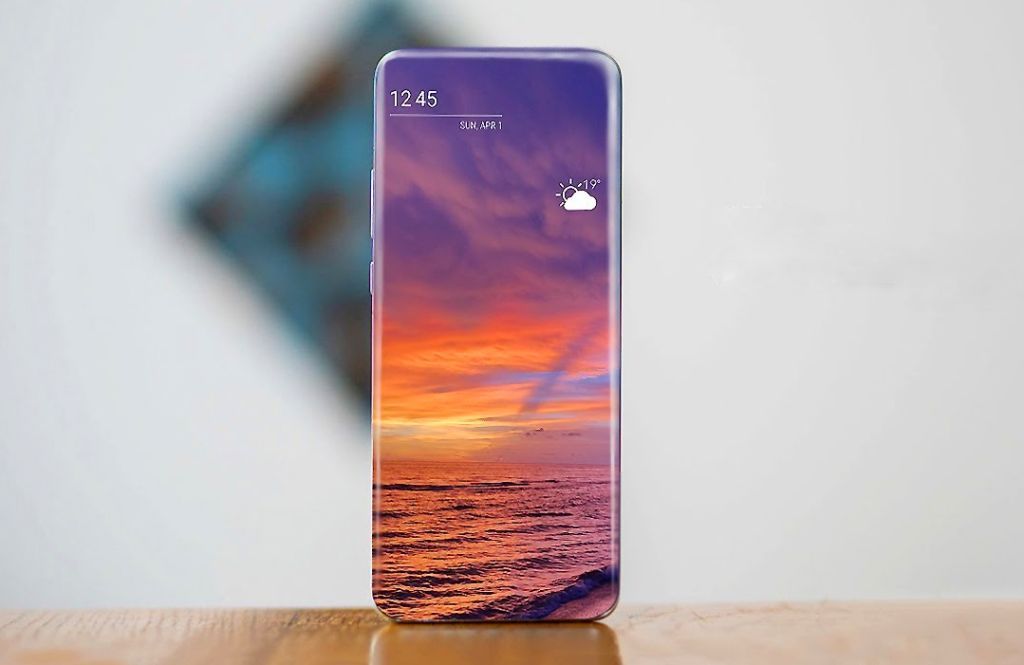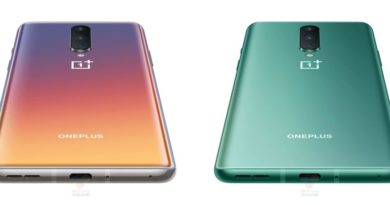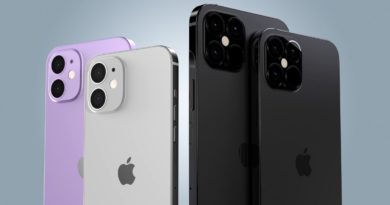Best big phones of 2020: Top phablets 6 inches or larger
![]()
The best big phones let you do it all — watch videos, lose yourself in games or text with fewer typos. These devices also tend to pack larger batteries than their smaller brethren, which translates to longer battery life.
Practically every high-end handset comes in a bigger option, from Apple’s iPhone 12 models to Google’s Pixels and Samsung’s Galaxy S20 and Note 20 series. And alongside their more expansive displays and improved longevity on a charge, many of those companies’ super-sized flagships pack more elaborate cameras, with a greater quantity of lenses and the best optics and sensors on the market.
If you’re ready to go big on your next phone, we’ve put together a list of the best big phones you can buy today. And should you want one of the best small phones instead, we’ve got you covered there, too.
What are the best big phones?
The biggest iPhone Apple ever built is also the best big phone available. The iPhone 12 Max has a 6.7-inch screen powered by the best-in-class A14 Bionic processor. It also has the best battery life of any of the new Apple phones.
But that’s not to discount the Samsung Galaxy Note 20 Ultra and its massive 6.9-inch display. This is a flagship phablet that can truly do it all, thanks to an impeccable triple-camera system, super-powerful silicon, dynamic 120Hz refresh rate and that handy S Pen stylus.
If money is truly no object, there is no bigger phone than the Galaxy Z Fold 2, which packs a 7.6-inch display when unfolded. Of course, you’ll pay a hefty price for it — $2,000. At the other end of the price spectrum, you can turn to the $250 Moto G Power, which packs a 6.4-inch display and 5,000-mAh battery to outlast every other phone we’ve ever tested in our web-surfing battery test, at an astonishing 16 hours and 10 minutes.
The best big phones you can buy today


The best big phone title goes to the iPhone 12 Pro Max. No, it doesn’t have the largest display, but it’s 6.7-inch OLED display is bright, colorful and incredibly immersive. Plus, Apple packs a lot of goodness into this device, including a super fast A14 Bionic processor, 5G networking and the best cameras we’ve ever tested. The iPhone 12 Pro Max outperformed the Pixel 5 in various side-by-side comparisons, even if it’s not always the best in low light.
Weighing in at 8 ounces, the iPhone 12 Pro Max is definitely a beast of a big phone, but its Ceramic Shield Display helps protect its screen from drops. The Pro Max is max in other ways, as it offers nearly 11 hours of battery life, which beats the regular iPhone 12 Pro by over 2 hours. Add in a powerful 2.5x zoom for the camera and sleek flat edge design and you have a big phone champ.
Read our full iPhone 12 Pro Max review.

The best big phone you can buy is the Galaxy Note 20 Ultra. And it starts with a huge 6.9-inch screen with a dynamic 120Hz refresh rate, offering super smooth scrolling and gameplay when you want it. However, the Note 20’s panel is also smart enough to dial things down based on what’s being displayed to conserve battery life. The S Pen also gets a bunch of upgrades this time around, from a faster 9ms response time and new air gestures to the ability to sync your scribbles with voice recordings.
Samsung also went big on the cameras with the Galaxy Note 20 Ultra. You get a 108MP main camera for capturing a ton of detail, plus a laser autofocus sensor to virtually eliminate blurring. The 50x Space Zoom is also very impressive, letting you cut in very, very close. The Galaxy Note 20 Ultra has plenty of other talents, too, including the ability to stream Xbox games, running Android apps on your laptop with Link to Windows and a wireless DeX mode that puts Apple’s AirPlay to shame.
Read our full Samsung Galaxy Note 20 Ultra review.

Samsung has released a slew of premium Galaxy S20 and Note 20 handsets this year, but the new Galaxy S20 FE (that stands for Fan Edition) might just be the most attractive of the bunch. It’s certainly the most attractively priced, starting at just $699, which happens to be $300 cheaper than the regular Galaxy S20.
Despite that low cost of entry, however, you still get a flagship-caliber Snapdragon 865 processor for your troubles, as well as 6GB of RAM and a triple-lens camera system that includes a 3x optically-zooming telephoto lens. Galaxy S20 FE buyers also get a large battery, weighing in at 4,500 mAh, and the phone comes in a wide assortment of colors, ranging from red, to white to lavender.
If the Galaxy S20 FE has one shortcoming, it’s that Samsung has skimped out on the charging brick it packs in with this handset, which tops out at 15-watt speed. That’s only quick enough to get the phone to 35% capacity after a half hour, which is about half as fast as the latest, best charging solutions, like those offered by OnePlus. Still, you can always buy a faster charging adapter if you’re willing to pay extra.
Read our full Samsung Galaxy S20 FE review.

The new iPhone 12 may not be quite as large as the iPhone 12 Pro Max, but with a 6.1-inch display that now utilizes OLED technology, it’s sized similarly to the outgoing iPhone 11. The difference with the new device’s panel is its far higher resolution and richer colors, which vastly outperform the quality of visuals on the iPhone 11.
But the differences go beyond the display. The iPhone 12 supports 5G in all its forms, no matter what network you take it to; it features MagSafe, for hassle-free wireless charging and a range of accessories; it has two highly-capable cameras with the ability to record Dolby Vision HDR video; and of course, it benefits from Apple’s best-in-class A14 Bionic processor. All of this culminates in a phone that is arguably the most well-rounded for its price in Apple’s entire repertoire. We just wish it came with more than 64GB of base storage out of the box, and a charger, too.
Read our full iPhone 12 review.

The 6.7-inch Samsung Galaxy Note 20 may not have the astonishing 108MP camera from the $300 more expensive Note 20 Ultra model, nor does it have its 120Hz display or glass-and-metal design. But it is just as capable when it comes to getting things done, thanks to its Snapdragon 865 Plus processor, S Pen and all the enhancements Samsung has made to its Notes app and productivity features.
The Note 20 can cast to a wireless display or your Windows PC via the desktop Your Phone app, and now allows users to append audio recordings to handwritten or types notes. It also supports Xbox cloud gaming via the Xbox Game Pass Ultimate beta, making it well suited for play as well as work.
We do wish the Note 20 came with a beefier battery or perhaps more efficient chipset, as it lasted a fairly average 9 hours and 26 minutes in our custom battery test. That said, there aren’t many serious downsides to going with the cheaper Note 20 versus the pricier Ultra, but you will save a ton of cash in the process.
Read our full Samsung Galaxy Note 20 review.

You don’t get a much bigger phone than one with a 7.6-inch display, which is precisely how large the Samsung Galaxy Z Fold 2 unfolds to be. A massive panel like that is ideal for running multiple applications at once, which the Z Fold 2 lets you do with its App Pair feature.
But let’s say you’re on the go, and the time’s not right to be carrying a massive tablet display everywhere. The Z Fold 2 folds down to a 6.2-inch cover display that can support all the same applications and activities as the primary panel. Even better, thanks to Samsung’s clever Continuity software, whatever app you’re using on either display will transition to the other one when you open or close the device.
Thoughtful features like that make the Galaxy Z Fold 2 not only the best foldable phone on the market, but the most versatile big phone — for those willing to shell out $2,000 for the privilege, that is.
Read our full Samsung Galaxy Z Fold 2 review.

You don’t have to pay big bucks to get a phone with a fast-refreshing display. The 6.49-inch LCD panel on the OnePlus Nord N10 5G offers a 90Hz refresh rate in a device that won’t break the bank. The phone costs £329 in the UK, and while we’re waiting for a US price, we’d expect this 5G-capable phone to be on the affordable side of $400.
You won’t get a top-of-the-line processor at that price, but the Snapdragon 690 system-on-chip is capable of delivering enough performance for most users. And the phone’s design, while not cutting edge, will give you lots of screen space to work with. Plus, you’ll get a full day’s charge out of the OnePlus Nord N10, thanks to a 4,300 mAh battery.
Read our full OnePlus Nord N10 5G review.

Measuring 6.78 inches from corner to corner, the OnePlus 8 Pro has one of the largest displays on any smartphone you can buy today. It’s also one of the prettiest AMOLED screens on any modern handset, with a quad-HD+ resolution and a peak refresh rate of 120 Hz.
While the OnePlus 8 Pro isn’t far from the first phone with a 120 Hz panel, it does one up the displays in Samsung’s latest Galaxy S20 series of handsets, because OnePlus’ device allows you to use the phone at its maximum resolution and refresh rate simultaneously. This is something avid gamers and streaming enthusiasts will appreciate, along with the panel’s boosted 240 Hz touch sampling rate, which makes the screen as responsive as it is smooth.
There’s a lot to like about the OnePlus 8 Pro aside from its screen, too — like its speedy Snapdragon 865 power and gobs of superfast LPDDR5 RAM, respectable quad-lens camera module and lightning-quick wireless charging, which can get the battery to 50% in just a half hour. At $899, it’s one of the most expensive handsets the company has ever released, though it slides in at several hundred less than the similarly-sized and specced Galaxy S20 Plus, making it a compelling alternative to Samsung’s flagships and one of the best big phones there is.
Read our full OnePlus 8 Pro review.

If you want a big screen for less than what Samsung charges for its flagships, turn to the Nokia 8 V 5G UW. This 5G phone sports a massive 6.81-inch LCD panel that makes gaming and video more immersive. While this particular model is a Verizon exclusive, Nokia also offers the unlocked Nokia 8.3 5G, which is essentially the same phone, only without the antenna to work on Verizon’s high-speed 5G network.
Besides the giant screen (which proved to be a little dim in our testing), the standout feature on the Nokia 8 V is its ultrawide angle camera which takes landscape shots to rival what you get from leading camera phones. The rest of the camera array produces decent shots, too, though we noticed some struggles in low light. You also get performance in line with other Snapdragon 765G-powered phones, so the Nokia 8 V can handle just about task you throw at it.
Read our full Nokia 8 V 5G UW review.

Big screens tend to drain batteries faster than their more compact counterparts, but that’s not a concern with the Moto G Power. Equipped with a 5,000 mAh battery, the Moto G Power was the longest-lasting phone we’ve tested in some time, holding out for 16 hours and 10 minutes on our battery test. That places the Moto G Power at the head of our list for best phone battery life.
But there’s more to the Moto G Power than just a big battery. You get a sizable 6.4-inch screen to work with, though we wish the G Power produced more vibrant colors. The processor and cameras aren’t high-end, but they do produce performance and pictures that measure up well against other phones in the Moto G Power’s price range. And speaking of price, that’s probably the best thing the Moto G Power has going for it — at $249, this phone is one of the most affordable phablets around.
Read our full Moto G Power review.
How to choose the best big phone for you
- Android or iPhone? Android phones give you more choice in terms of price, size and innovative designs — many of them happen to be larger, too. However, iPhones offer speedier software updates, better games and apps and better security and privacy. See our iPhone vs Android face-off.
- Unlocked or carrier? Most shoppers in the U.S. buy new phones through their wireless carrier. But an unlocked phone gives you the freedom to buy the device without any sort of contract and then bring it to the provider you want to use.
- Screen size: For fans of big phones, 6 inches and up is a good place to start. The biggest phones are 6.5 to just under 7 inches. If you want something you can easily use with one hand, go with one of the best small phones with a screen under 6 inches.
- Cameras: Don’t pay attention to the megapixel count. Instead, look at camera face-offs between phones to see the photo quality and look for special features like Night Mode to get better quality in low light. Also see our best camera phone roundup.
- Battery life: Generally, phones with larger batteries (measured in mAh) offer the longest battery life, but that’s not always the case. That’s why we run our own custom battery tests, where phones repeatedly load webpages over a T-Mobile data connection while set to 150 nits of display brightness until they run out of juice.
How we test smartphones
In order for a smartphone to make our best phone list, it needs to excel on several tests that we run on every handset. We perform some of these tests in our labs and some in the real world.
When it comes to performance, we rely on such synthetic benchmarks as Geekbench 5 and 3DMark to measure graphics performance. These tests allow us to compare performance across iPhones and Android devices. We also run a real-world video transcoding test on each phone using the Adobe Premiere Rush app and time the result.
To measure the quality of a phone’s display, we perform lab tests to determine the brightness of the panel (in nits), as well as how colorful each screen is (DCI-P3 color gamut). In these cases, higher numbers are better. We also measure color accuracy of each panel with a Delta-E rating, where lower numbers are better and score of 0 is perfect.
One of the most important tests we run is the Tom’s Guide battery test. We run a web surfing test over 5G or 4G at 150 nits of screen brightness until the battery gives out. In general, a phone that lasts 10 hours or more is good, and anything above 11 hours makes our list of the best phone battery life.
Last but not least, we take the best phones out in the field to take photos outdoors, indoors and at night in low light to see how they perform versus their closest competitors. We take shots of landscapes, food, portraits and more, and also allow you to be the judge with side-by-side comparisons in our reviews.


